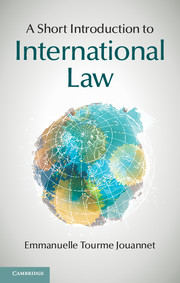2 - International law as a legal order
Published online by Cambridge University Press: 05 February 2015
Summary
As a European cultural project, it is no surprise that international law exhibits a Western legal character. In particular, since it first emerged in the eighteenth century, it has been doctrinally conceived of in a systematised form typical of Western thought. It reflects the determination to impose a rationalised order among states upon what might appear to be the social disorder of international society and national societies. Envisioning international law as forming a legal order requires the consideration of it as an autonomous and coordinated set of subjects, institutions, practices and rules. This perception takes on even more importance within the discipline when the very concept of legal order becomes a common concept of the theory of law, as it did in the early twentieth century. Scholars realised how convenient it was for the understanding of international law to envisage it in the round and not just its various parts, because by doing so a whole series of questions about its definition, existence and validity (and those of its component parts) found a priori more helpful answers.
It is proposed to adhere to this vision of international law as a legal order because it is still of sufficient interest to present international law synthetically – from a legal and sociological standpoint and not one of formal logic – while at the same time showing its fragility and vulnerability to numerous challenges. Three questions will be specifically addressed. The first is a problem of the definition of international law and how it stands apart from other bodies of law and legal orders (section II). The second question is to identify some of its main components, that is, its subjects and its rules, because their increasing diversity is both a cause and an effect of the changes it is undergoing (section III). The third question is to enquire into its possible unity and coherence as a legal order, whereas it seems to be heading inexorably towards ever greater normative and institutional disorder (section IV). But before that, we shall recall a particularly keen debate that runs through all international disciplines: whether the changes since 1945 signal the end or the decline of the older classical legal order and the emergence of a new markedly different order (section I).
- Type
- Chapter
- Information
- A Short Introduction to International Law , pp. 22 - 63Publisher: Cambridge University PressPrint publication year: 2014



